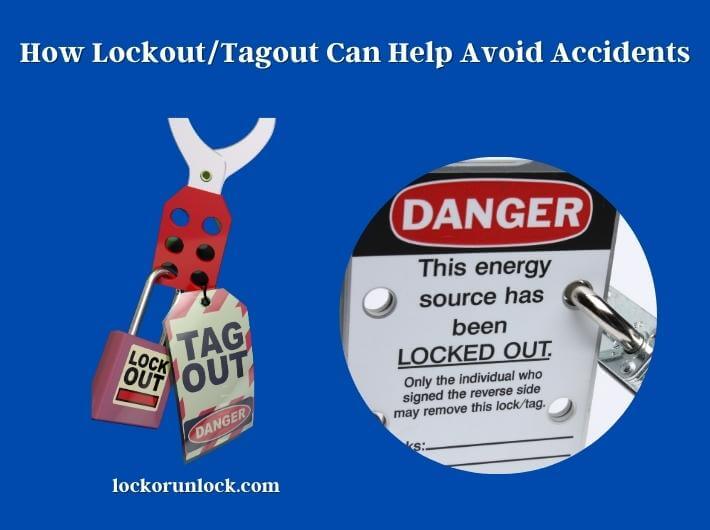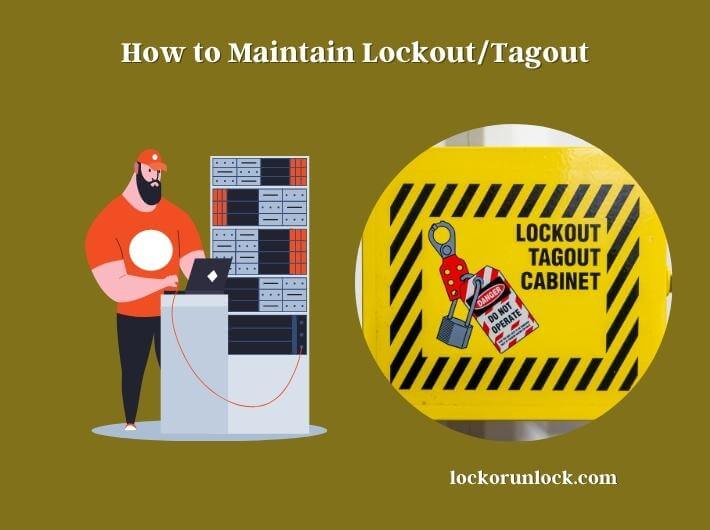Lockout/Tagout (LOTO) is a critical safety procedure used in a wide range of workplaces, including manufacturing plants, construction sites, and transportation facilities. LOTO is designed to prevent injuries and fatalities caused by the accidental release of hazardous energy during maintenance or repair work.

The purpose of LOTO is to ensure that equipment or machinery is properly shut down, isolated, and secured before any work is performed on it. This procedure involves the use of specific LOTO devices, such as locks and tags, to prevent the accidental startup of equipment, as well as strict policies and procedures that must be followed by both employers and employees.
The importance of LOTO in workplace safety cannot be overstated. Without proper LOTO procedures, employees can be exposed to the risk of serious injury or even death from the release of hazardous energy. For example, a worker performing maintenance on a machine that has not been properly shut down and isolated can be injured by moving parts or by the release of stored energy.
To preventing injuries, LOTO can also help reduce equipment damage and downtime, improve workplace productivity, and ensure compliance with industry regulations and standards.
Lockout/Tagout
Lockout/Tagout is a safety procedure used in industrial settings to ensure that machinery is properly shut down and prevented from being turned on while maintenance or repairs are being conducted. The process involves isolating energy sources, such as electrical, hydraulic, and pneumatic, and locking or tagging them to prevent accidental start-up.
The Lockout/Tagout procedure is important because it can help prevent accidents and injuries to workers who perform maintenance or repairs on machinery. When a machine is shut down for maintenance, it is still possible for it to start up unexpectedly if energy sources are not properly isolated. This can lead to serious accidents, injuries, or even fatalities.
The Lockout/Tagout process involves several steps that must be followed to ensure safety. These include preparing for the shutdown, shutting down the machine, isolating energy sources, locking or tagging energy isolation devices, and verifying that all energy sources are properly isolated before beginning maintenance or repairs.
Only authorized employees who are trained and knowledgeable in the Lockout/Tagout process are allowed to perform these procedures. Employers are responsible for providing the necessary training and equipment to their employees to ensure that Lockout/Tagout is conducted safely and effectively.
How Lockout/Tagout Can Help Avoid Accidents?
Lockout/Tagout is a safety procedure used in industrial settings to ensure that machines are properly shut down and prevented from being turned on while maintenance or repairs are being conducted. This process can help avoid accidents by ensuring that the energy sources of the machinery are safely isolated and rendered inoperative.

The Lockout/Tagout process involves several steps that must be followed to ensure the safety of workers. These steps include:
Preparation
Before the Lockout/Tagout process can begin, the authorized employee must prepare for the shutdown of the machine by identifying all energy sources and determining the type and magnitude of the energy that needs to be controlled.
Shutdown
Once the energy sources have been identified, the machine must be shut down using the appropriate procedures for the specific machine.
Isolation
After the machine has been shut down, the energy sources must be isolated or disconnected to ensure that the machine cannot be turned on accidentally.
Lockout/Tagout: Lockout devices, such as padlocks, are used to secure the energy isolation devices in a locked position, while tags are used to indicate that the machine is not to be operated.
Verification
Before any work can be done on the machine, the authorized employee must verify that all energy sources have been properly isolated and the machine cannot be turned on.
Following the Lockout/Tagout process, workers can be assured that they are protected from the unexpected start-up of machinery, which can cause serious accidents and injuries. This process is essential for the safety of workers who perform maintenance and repairs on machines, and it can help prevent accidents and injuries in industrial settings.
Implementing Lockout/Tagout
Implementing LOTO in the workplace requires a comprehensive program that includes policies, procedures, and training. Below are some key steps for implementing LOTO effectively:
Develop LOTO Policies and Procedures
Employers must establish written policies and procedures for LOTO that detail the types of energy sources present in the workplace, the specific LOTO devices required, and the procedure for implementing LOTO. These policies and procedures should be regularly reviewed and updated as necessary.
Conduct Hazard Assessments
Employers should conduct hazard assessments to identify equipment or machinery that requires LOTO and to determine the appropriate LOTO devices to use.
Provide LOTO Devices
Employers are responsible for providing appropriate LOTO devices for employees to use. These devices should be durable, tamper-resistant, and clearly marked with warning labels.
Train Employees
Employers must provide training for employees on LOTO policies and procedures, including how to identify energy sources and use LOTO devices correctly. Refresher training should be provided as necessary.
Develop a LOTO Program
Employers should develop a comprehensive LOTO program that includes all necessary policies, procedures, training, and equipment. This program should be regularly reviewed and updated to ensure it remains effective.
Conduct Audits
Employers should regularly audit their LOTO program to ensure that it is being followed correctly and to identify any areas that may require improvement.
Encourage Communication
Employers should encourage open communication between employees and management to ensure that LOTO procedures are being followed correctly and that any concerns or issues are addressed promptly.
LOTO is a critical safety procedure that requires the cooperation and participation of both employers and employees to be successful.
How to Maintain Lockout/Tagout?
Maintaining a Lockout/Tagout program is crucial for ensuring the safety of workers in industrial settings. Here are some key steps for maintaining a successful Lockout/Tagout program:

Review and update procedures: Regularly review Lockout/Tagout procedures and update them as needed to ensure they are effective and up-to-date. This includes reviewing and updating machine-specific procedures as machines are added or modified.
Provide training: Provide ongoing training to all employees who are involved in the Lockout/Tagout program. This includes training on the proper procedures, identifying energy sources, using lockout/Tagout devices, and verifying isolation.
Inspect devices: Inspect and maintain all lockout/Tagout devices regularly to ensure they are in good condition and functioning properly. Replace any worn or damaged devices promptly.
Conduct audits: Conduct regular audits of the Lockout/Tagout program to ensure that it is being followed correctly and effectively. This includes auditing procedures, devices, and employee training.
Document everything: Keep detailed records of all Lockout/Tagout procedures, training, audits, and device inspections. This documentation can be used to track progress and identify areas for improvement.
Continuously improve: Continuously improve the Lockout/Tagout program by analyzing incident reports, identifying root causes, and implementing corrective actions to prevent similar incidents from occurring in the future.
Maintaining a Lockout/Tagout program is an ongoing process that requires commitment and dedication from all employees involved.
Benefits of Lockout/Tagout
The benefits of Lockout/Tagout (LOTO) cannot be overstated when it comes to workplace safety. LOTO is an essential procedure that helps prevent workplace injuries and fatalities caused by the accidental release of hazardous energy during maintenance or repair work. Below are some of the key benefits of LOTO:
Protects Employees
The primary benefit of LOTO is the protection it provides employees from the hazards of hazardous energy. By properly shutting down and isolating equipment, employees are protected from the risk of serious injury or death caused by the release of stored energy.
Reduces Equipment Damage and Downtime
LOTO can also help reduce equipment damage and downtime by ensuring that maintenance or repair work is performed correctly and safely. By using LOTO devices, employees can work confidently, knowing that the equipment is properly secured and won’t start up unexpectedly.
Improves Workplace Productivity
By preventing injuries and reducing equipment downtime, LOTO can help improve workplace productivity. Employees are more productive when they feel safe and confident in their work environment.
Ensures Compliance with Regulations and Standards
Compliance with industry regulations and standards is essential for businesses to operate safely and effectively. Lock standards are guidelines that specify the requirements for locks to meet a particular level of security. LOTO is a key component of many workplace safety regulations and standards, and implementing LOTO can help ensure compliance and avoid costly fines.
Boosts Employee Morale
A safe work environment is crucial for employee morale and job satisfaction. By implementing LOTO, employers can demonstrate their commitment to employee safety and well-being, which can help boost morale and reduce turnover.
Bottom Line
Lockout/Tagout (LOTO) is an essential safety procedure that helps prevent workplace injuries and fatalities caused by the release of hazardous energy. Implementing LOTO requires a comprehensive program that includes policies, procedures, training, and equipment.
By properly implementing LOTO, employers can protect their employees, reduce equipment damage and downtime, improve productivity, ensure compliance with regulations and standards, and boost employee morale.
LOTO is not only a safety requirement but also a moral obligation of employers to their employees. Employers should always prioritize the safety and well-being of their employees and ensure that LOTO is a part of their safety program. Employees should also understand the importance of LOTO and follow proper procedures to ensure their safety and the safety of their colleagues.
